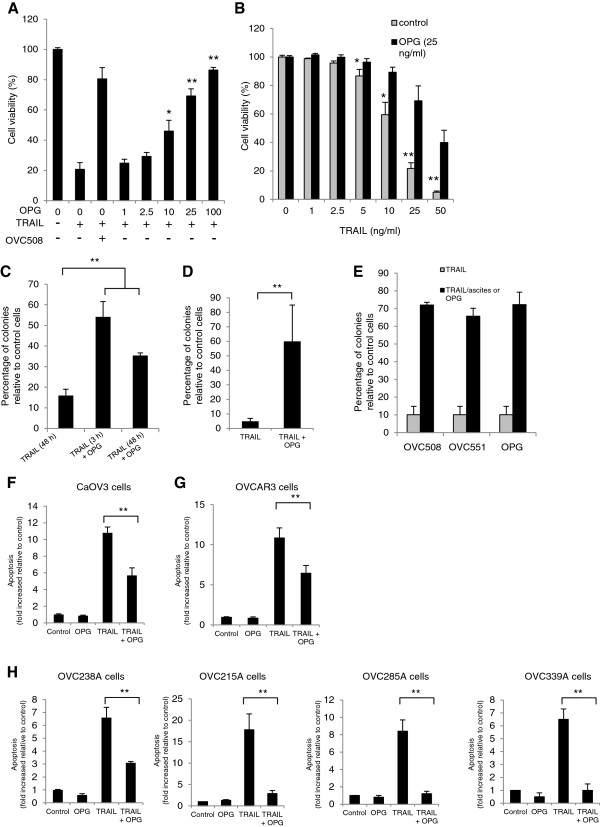Figure 1.
TRAIL-induced apoptosis can be attenuated by OPG and malignant ascites. (A) CaOV3 cells were challenged with TRAIL (10 ng/ml) and increasing concentrations of recombinant OPG was added to the cultures. Cell viability was assessed after 48 h by XTT assay and was expressed as the percentage relative to control cells. (B) CaOV3 cells were challenged with increasing concentrations of TRAIL and a fixed dose of OPG (25 ng/ml for 48 h after which cell viability was assessed. (C) CaOV3 cells were challenged with TRAIL (10 ng/ml) and OPG (25 ng/ml) for either 3 h or 48 h. The cells were washed and fresh medium was added. Viable colonies were counted after 14 days and data were expressed as% of colonies in control (untreated) cells. (D) OVCAR3 cells were challenged with TRAIL (50 ng/ml) and OPG (25 ng/ml) for 48 h and assessed as above. (E) CaOV3 cells were challenged with TRAIL (10 ng/ml) and either OVC508 or OVC551 ascites (10% v/v) or OPG (25 ng/ml) for 48 h and viable colonies were counted after 14 days. CaOV3 cells (F), OVCAR3 cells (G) and primary tumor cells OVC238A (H) were challenged with either OPG (25 to 500 ng/ml), TRAIL (10 to 100 ng/ml) or both and apoptosis was assessed 24 h later. Apoptosis was expressed as fold increased relative to control (untreated) cells. Data are expressed as means of triplicates from three independent experiments ± SD. * P < 0.01, ** P < 0.001 compared to control.

